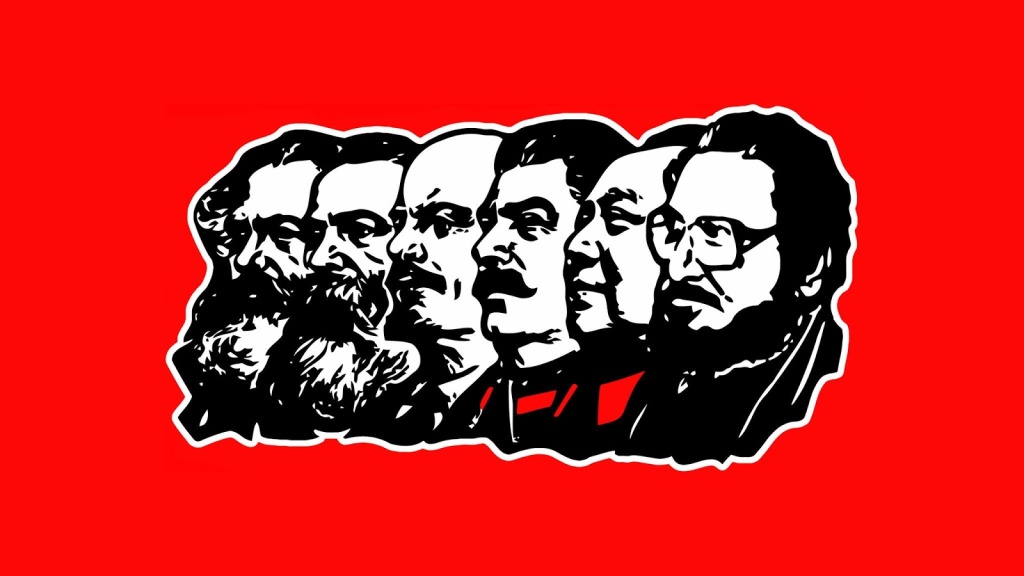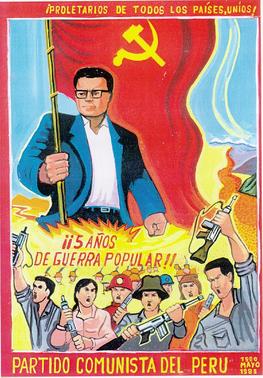Adapted from our in-progress book
The PCP is the most advanced political party of our time. Naturally, it has become a victim of bourgeois propaganda of all types. Strangely, though, it seems to be that most “leftists” (revisionists, dogmatists, ultra-leftists, and other opportunists) oppose the PCP, more so than modern liberal-bourgeois media! We need to oppose the lies and slanders against the PCP and Chairman Gonzalo.
The PCP was not homophobic. This is one of the worst lies against our comrades in Peru. The PCP did execute one gay person, but this was not for their sexuality; rather, it was because they worked with the fascist state apparatus against the revolution. Vancouver Partisan wrote an article called “REVOLUTION IN PERU: Is the PCP Homophobic?”, and it shows how the PCP was actually not homophobic:
Unlike both the reactionary government and the revisionist MRTA, the PCP seems to be, at least as a matter of policy, entirely devoid of homophobia. The PCP stated in 1994, responding specifically to claims that they were killing LGBT+ people, “It is probable that the PCP has executed a homosexual, but rest assured that it was not done because of their sexual orientation but because of their position against the revolution. It is not difficult to see that in the bars and brothels of Peruvian cities frequented by elements of the police and army some homosexuals work as snitches and collaborators…when the party seizes that city it will settle accounts with those elements, regardless of their sexual orientation. What then happens is the government and reactionary media report that the Party killed gays”. The position that snitches and collaborators should be executed regardless of their sexual orientation is absolutely correct, and one that should be emulated. Nevertheless, one could question whether, despite this solid theoretical line, in practice the PCP may act differently. In fact, even Enrique Bossio, a notable member of the Homosexual Movement of Lima (MHOL), a group which is not at all sympathetic to the PCP, admitted that “the PCP has not made gays the focus of any attacks”, and noted that the MRTA’s track record is far worse. It is also worth noting that the PCP takes responsibility for its actions, even ones as brutal and controversial as the action in the village of Lucanamarca, which Chairman Gonzalo took personal responsibility for in his interview. If they are targeting LGBT+ people, it would be extremely out of character for them to deny it.
[Source]
The PCP did not deliberately kill indigenous people to “commit genocide”; this would simply not make tactical sense as many cadres and supporters of the PCP were indigenous. “… [I]t is disingenuous to write only of the indigenous Peruvians killed by revolutionaries when the revolutionaries were themselves indigenous peasants, and when the Peruvian government was arming ‘native against native’ through the conscription of villagers into paramilitary ‘ronderos’ [‘self-defense’ militias] for use as cannon-fodder” [Source].
If any side in the Peruvian people’s war is to be called genocidal, it is the fascistic Peruvian state, which forcefully sterilized over 300,000 indigenous people with the support of the US imperialists. The PCP neither has the capabilities nor the need to conduct such atrocities against the masses. The indigenous people supported the party, especially in Ayacucho, the birthplace of the war. In “Why Peasants Rebel: The Case of Peru’s Sendero Luminoso”, a bourgeois study of the Peruvian people’s war, the author says this:
First in university training programs, and later on their own, the Senderista militants [members of the PCP] actually lived for long periods in Indian communities. They learned the Indian language if they did not already know it, married into the communities—and preached politics. …
… Raul Gonzalez asked “all those who wanted to converse” whether or not they thought Sendero was a peasant movement, and whether or not it counted on support from the population; according to Gonzalez, the response was virtually unanimous: “It’s a movement supported by the youngest peasants. The older ones are resigned to their lot, but they do back their kids.”
[Source]
Such facts do not indicate that the PCP was against indigenous people or vice-versa; they show just the opposite, namely that the native masses supported the revolutionaries.
Now, with regards to the PCP’s use of violence and “terror” in general, we need to understand it in the context of Peru’s conditions. Peru was and remains a bureaucratic-comprador capitalist state, riddled with corruption, brutal exploitation and subjugation, a lack of freedom for the masses, major inequalities, and—most importantly—much violence. The state used armed forces against the PCP and the Peruvian people liberally, and it was not afraid to commit war crimes and crimes against humanity to suppress the revolutionary fire. Many “self-defense” militias—armed by the fascist state—would make bases within villages and towns. What could the party, the people’s army, and the people do? Gonzalo answered this in his interview (with our emphasis):
In the face of reactionary military actions and the use of mesnadas, we responded with a devastating action: Lucanamarca. Neither they nor we have forgotten it, to be sure, because they got an answer that they didn’t imagine possible. More than 80 were annihilated, that is the truth. And we say openly that there were excesses, as was analyzed in 1983. On some occasions, like that one, it was the Central Leadership itself that planned the action and gave instructions. That’s how it was. In that case, the principal thing is that we dealt them a devastating blow, and we checked them and they understood that they were dealing with a different kind of people’s fighters, that we weren’t the same as those they had fought before. This is what they understood. The excesses are the negative aspect. Understanding war, and basing ourselves on what Lenin said… the masses engaged in combat can go too far and express all their hatred, the deep feelings of class hatred, repudiation and condemnation that they have–that was the root of it. This has been explained by Lenin very clearly. Excesses can be committed. The problem is to go to a certain point and not beyond it, because if you go past that point you go off course. … the main point was to make them understand that we were a hard nut to crack, and that we were ready for anything, anything.
[Source]
The article “Así mueren los enemigos de la clase” describes the proletarian, Marxist view on violence, especially as it relates to the PCP’s use of it (our emphasis):
We must contend now with the question of violence from the Marxist perspective, which is divided into two main categories: revolutionary violence and reactionary violence. We had better learn the difference. One of the sharpest knives at the liberal butcher shop that is aimed at slaughtering and dismembering revolutions is the conflating of these two distinct types of violence—combining two into one. Hence they take part in reactionary and, most often, State-sanctioned violence. …
State violence in this case is the arming of the ronderos, and the preparation of counterinsurgency on the village level, through the old ideological organs of colonialism, mainly the church. Reactionary violence was the stoning, dismemberment, and public display of the body of a beloved revolutionary and commander in the PCP. …
There are those critics who of course always seek to pardon the white terror of a fascist State by suggesting that it was the revolution that provoked reaction. This argument pardons the State of its wrongdoings. It pardons the most backward of Peruvian society, who willingly joined the death squads. …
So then we must come to understand revolutionary violence as the dialectical opposite of reactionary violence. Violence is anything but neutral. Revolutionary violence… is when the masses get so fed up with torture, exploitation, murder, and rape at the hands of the ronderos and the Party calls upon them like a mighty storm. No one, least of all the PCP, can deny the great and fearless masses their revenge. Those who are repressed by the constant threat of reactionary violence respond to the will of such a Party, and their rising cannot be struck down. For the PCP to denounce the annihilation of class enemies would be to betray their own people, their own cause—that is, the cause of the international proletariat. … [The violence] accomplished its objective and decreased interest in joining death squads. Those who fake concern for the more than 80 annihilated by revolutionary forces do so only opportunistically, from a position of safety, where the white terror has not mutilated and maimed them; to them it is most certainly “terrible” and “going too far.” For revolutionaries deeply in tune with the masses we can say “it’s fine.” We can understand that pain in the faces of the Black youth in the US, who are boiling over for revenge… their revenge will at times also contain excesses, and revolutionaries will support them, for we aim to make a revolution unlike any other.
[Source]
Just like the other revolutionary parties of today, the PCP uses violence in favor of the masses against the enemy. While this may have excesses, we must defend revolutionary violence if we are to support the people. This is why we defend the PCP, and we do not see the Lucanamarca massacre as an event that ruins its legacy.
To conclude, the PCP cannot be considered a “terrorist organization” except by imperialist and comprador media, and as proletarians, we must support the Peruvian people in their struggle for New Democracy, socialism, and communism!


Leave a comment